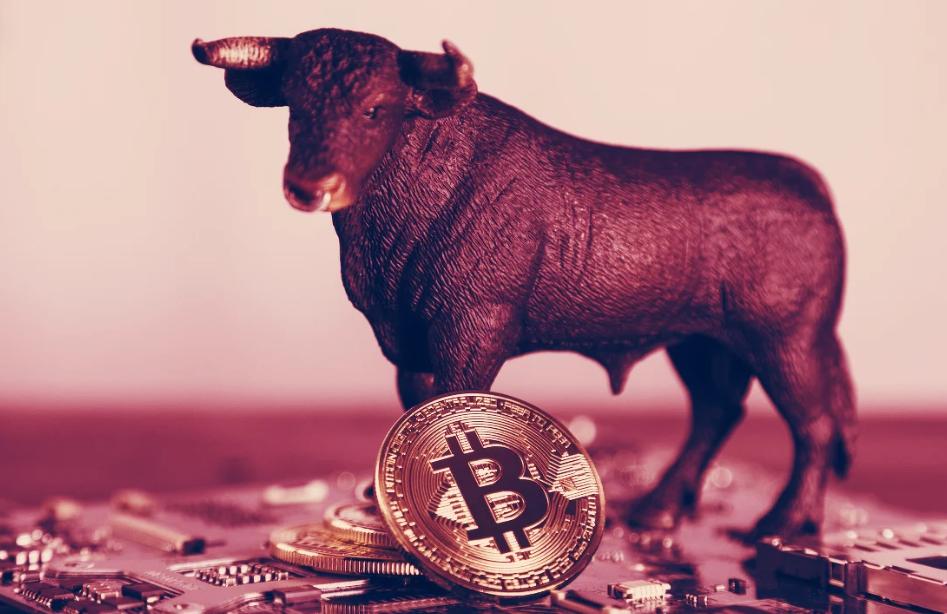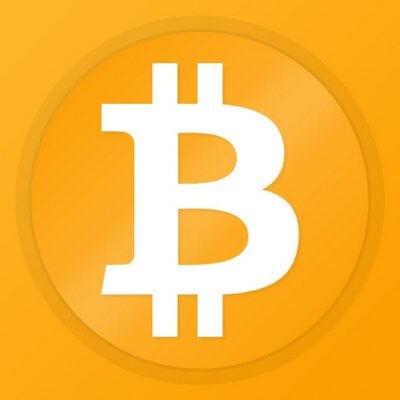Arthur Hayes: Bitcoin will fluctuate between 60,000 and 70,000 until August
Original Title: “Bitcoin will fluctuate between 60,000 and 70,000 until August”
Author: Arthur Hayes
Compiled by: GaryMa, Wu Says Blockchain
Since mid-April, some degens have been screaming "May crisis" upon seeing the continued decline in the crypto market.
The price trend aligns with my expectations. The U.S. tax season, concerns about the Federal Reserve's future policies, the implementation of the Bitcoin halving event, and the slowdown in the growth of U.S. Bitcoin ETF assets under management (AUM) have collectively created a much-needed market cleanup in the past two weeks. Speculators or short-term investors may choose to temporarily exit the market and observe the upcoming situation. Meanwhile, we hardliners will continue to hodl and, if possible, accumulate more of our favorite crypto reserve assets, such as Bitcoin and Ethereum, as well as high beta altcoins like Solana, Dog Wif Hat, and I must say, Dogecoin.
This is not a fully comprehensive global macroeconomic, political, and crypto article. Instead, I want to emphasize why the U.S. Treasury, the Federal Reserve, and the actions of the First Republic Bank have provided fiat liquidity or increased pathways for fiat liquidity now and in the near future. I will quickly go through some charts that support my bullish viewpoint.
Quantitative Tightening (QT) Reduction = QE
When ordinary investors equate quantitative easing (QE) with money printing and inflation, it means trouble for the elite. Therefore, they need to change the terminology and provide the financial system (tumor) with its monetary heroin dosage. The reduction in the pace of asset shrinkage under the Federal Reserve's quantitative tightening (QT) plan sounds harmless. But undoubtedly—by reducing the pace of QT from $95 billion per month to $60 billion, the Federal Reserve is effectively adding $35 billion of dollar liquidity each month. When you combine reserve balance interest, reverse repurchase agreement (RRP) payments, and U.S. Treasury interest payments, the reduction in QT increases the amount of stimulus provided to the global asset markets each month.
The Federal Reserve announced this week that it will cut QT at the May 2024 meeting. Using a convenient chart, let's take a look at the dollar liquidity situation before and after the meeting.

Note that the QT item is based on the Federal Reserve's weekly reported balance sheet and the actual monthly reduction amount for 2024. As you can see, the Federal Reserve has failed to meet the $95 billion monthly target. This raises the question of whether the target of $60 billion will also be missed by the Federal Reserve. Missing the target is favorable for dollar liquidity.

"High" interest rates require the Federal Reserve and the U.S. Treasury to pay interest to the wealthy, and combined with the slowdown in QT, this becomes even more stimulative.
This is the goal on Powell's side; what about his good partner Yellen?
U.S. Treasury Quarterly Financing Announcement (QRA)
Since the U.S. is in a fiscal dominance position, Yellen's statements are more important than those of any other monetary official. Each quarter, the U.S. Treasury releases the QRA to guide the market on the amount and type of debt that must be issued to fund the government. Before the QRA for Q2 2024, I have some questions:
Will Yellen borrow more or less than the previous quarter, and why?
What is the maturity profile of the issued debt?
What will the target balance of the Treasury General Account (TGA) be?
Question 1:
In the quarter from April to June 2024, the Treasury expects to borrow $243 billion in net marketable debt held by the public, assuming a cash balance of $750 billion at the end of June. The borrowing estimate is $41 billion higher than what was announced in January 2024, mainly due to lower cash receipts, partially offset by a higher cash balance at the beginning of the quarter.
If you hold Treasuries, this is bad news. Supply will increase, and despite strong performance in the U.S. economy and stock market, tax revenues remain disappointing. This will accelerate the bond market's surge, causing long-term interest rates to rise significantly. Yellen's response to this may be some form of yield curve control, at which point Bitcoin will really start climbing towards $1 million.
Question 2:
According to current fiscal forecasts, the Treasury expects to increase the auction sizes of 4-week, 6-week, and 8-week bills in the coming days to ensure that we meet our weekly cash needs around the end of May. Then, before the June 15 non-withholding and corporate tax payment dates, the Treasury expects to moderately reduce the auction sizes of short-term bills from early to mid-June. Subsequently, throughout July, the Treasury expects to restore the auction sizes of short-term bills to levels close to the peaks seen in February and March.
Yellen needs to increase the issuance of short-term bills because the market cannot bear her response at the long end of the yield curve. Another benefit of increasing bill issuance is that it will clean up reverse repurchase agreements (RRP), thereby injecting dollar liquidity into the system.
Question 3:
In the quarter from July to September 2024, the Treasury expects to borrow $847 billion in net marketable debt held by the public, assuming a cash balance of $850 billion at the end of September.
The target TGA balance is $850 billion. Currently, this balance is $941 billion, which means a reduction of about $90 billion over the next three months.
The impact of this QRA has a slight positive effect on dollar liquidity. It is not as sensational as the announcement in November 2023, which sent bond, stock, and crypto prices soaring. But it will slowly help our investments appreciate over time.
First Republic Bank
Have you heard of this tiny, worthless bank? I had never heard of it before it collapsed. The failure of another too-big-to-fail (TBTF) bank is not noteworthy. But it is important to grasp the response of U.S. monetary officials.
The U.S. government (through the FDIC) insured deposits at any U.S. bank up to $250,000. When a bank fails, uninsured depositors should be left with nothing. However, in an election year, this is politically unacceptable, especially if those in power have been assuring the public that the banking system is healthy.
Here is an excerpt from the FDIC:
As of January 31, 2024, Republic Bank had total assets of about $6 billion and total deposits of about $4 billion. The FDIC estimates that the cost to the Deposit Insurance Fund (DIF) related to the failure of Republic Bank will be $667 million. The FDIC determined that the acquisition of Republic Bank by Fulton Bank was the cheapest solution for the DIF compared to other alternatives. The DIF is an insurance fund created by Congress in 1933, managed by the FDIC, aimed at protecting deposits in the nation's banks.
Explaining what happened in layman's terms requires understanding the implications between the lines.
Fulton agreed to acquire First Republic and ensure that all depositors are fully protected, provided that the FDIC offers some cash. The FDIC insurance gave Fulton $667 million so that all depositors of First Republic could be fully protected. Why should the insurance fund be used for all deposits when some deposits are uninsured?
The reason is that if all deposits were not covered, the bank would collapse. Any large depositor would immediately transfer funds to a TBTF bank, which has the government's full guarantee on all deposits. Subsequently, thousands of banks nationwide would fail. This is not a good phenomenon in a democratic republic where elections are held every two years. Once the public realizes that the bank failures are entirely due to the policies of the Federal Reserve and the U.S. Treasury, some overpaid idiots will have to find real jobs.
Rather than suffer setbacks during elections, those in charge have effectively guaranteed all deposits in the U.S. banking system. This has effectively added $6.7 trillion in liabilities, as reported by the St. Louis Federal Reserve Bank for uninsured deposits.
This led to money printing because the FDIC's insurance fund does not have $6.7 trillion. Perhaps they need to seek advice from CZ, as the funds are not secure. Once the fund is depleted, the FDIC will borrow money from the Federal Reserve, which will print money to repay the loan.
Like other implicit money printing policies discussed in this article, there is no large-scale liquidity injection today. But we can now be completely sure that trillions of dollars in potential liabilities have been added to the Federal Reserve's balance sheet, which will be financed through money printing.
Buy in May and HODL
Gradually increasing liquidity by tens of billions of dollars each month will dampen negative price fluctuations in the future. While I do not expect cryptocurrencies to immediately fully recognize the inflationary nature of the recent U.S. monetary policy announcements, I anticipate that prices will bottom out, fluctuate, and begin to rise slowly.
With the arrival of summer in the Northern Hemisphere, some cryptocurrency investors will feel the market's vibrancy; they may feel they have preemptively gained wealth and thus spend time in some popular spots enjoying life. I certainly won't always be staring at Bitcoin prices; I can go dancing. The recent sharp sell-off has provided an excellent opportunity for me to unlock my USDe and spend it on high beta junk coins.
I plan to buy Solana and related dog coins for momentum trading. For longer-term altcoin holdings, I will increase my allocation to Pendle and identify other "discounted" currencies. I will use the remainder of May to increase my positions. Then it will be time to HODL and wait for the market to recognize the inflationary nature of the recent U.S. monetary policy announcements.
For those who need my predictions, here are the key points:
Did Bitcoin hit a local low of around $58,600 earlier this week? Yes.
What is your price prediction? A surge above $60,000, followed by fluctuations between $60,000 and $70,000 until August.
Are the recent Federal Reserve and Treasury policy announcements a form of implicit money printing? Yes.












